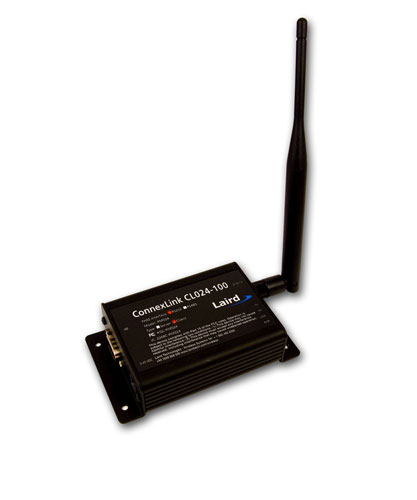
New RF Transceiver with FHSS Technology
Published on October 8, 2013

Embedded Wireless Solutions of Laird recently announced the release of the CL024 transceiver. The CL024 transceiver is a Frequency Hopping Spread Spectrum (FHSS) radio designed for license-free operation in the 2.4 GHz Industrial, Scientific, and Medical (ISM) band.
CL024 Transceiver
The CL024's use of Frequency Hopping Spread technology is significantly beneficial. It enables multiple networks to co-exist in the same area with limited interference. In addition, the FHSS technology ensures data reliability over long distances, and the license-free frequency bands (2.4 GHz Industrial, Scientific and Medical (ISM)) verify that the units are ready for use with no further certification requirements when designing into a new or legacy data system.
The CL024 utilizes the RF engine of the popular RM024 embedded modules in a packaged form which allows anyone to easily set up long range point-to-point or point-to-multipoint networks for serial communication.
Housed in a compact and rugged diecast enclosure, the CL024 RF transceiver enables long distance serial cable replacement with its wireless link. The radio features an RS232 interface for integration into legacy data systems, providing for backwards compatibility. Each unit is small and easily portable for use in mobile and temporary settings as well as fixed installations. The radio has a compact size of 4.4 x 2.7 x 1.4 inches and a conducted output power up to 125 mW (21dBm) and available antennas up to 9dBi for a maximum radiated power of one watt (30dBm).
The CL024 transceiver utilizes a Server/Client architecture for point-to-point or point-to-multipoint communications with an unlimited number of Clients in a network, API commands to control packet routing and reliable communication with serial UART speeds up to 460.8 Kbps. Mass production quantities of these modules are available now from all Laird global distributors as either stand-alone units or in preconfigured starter packs for point-to-point networks.
Read the press release here.